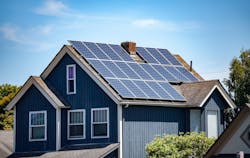Climate Change's Role in Enhancing Building Efficiency
Buildings are responsible for almost 40% of global carbon emissions, a statistic that has led governments to increasingly impose regulations on energy use and emissions. In response, technology companies are leveraging automation and robotics for eco-friendly construction methods, while architects are finding ways to incorporate resiliency and efficiency into new-home designs.
In New York City, projects such as the Charlotte building, an eight-story condo, are earning Passive House certification, signifying a 75% reduction in energy use. With Local Law 97 set to take effect next year, imposing fines on larger buildings that don't meet new energy-efficiency and emissions standards, sustainable building practices are becoming more critical than ever, The New York Times reports.
The law, part of a series of steps devised to shrink the city’s carbon emissions by 80 percent by 2050, will require any building of more than 25,000 square feet in New York City to meet new energy efficiency and greenhouse gas emission standards or risk fines each year. The penalties are stiff: $268 for every metric ton of carbon dioxide above the allotted limit, which studies estimate could amount to $200 million per year in penalties for some buildings. And it’s a two-tier process, with initial caps being rolled out in 2024 and stricter ones looming in 2030, when fines could jump to $900 million per year for buildings that aren’t in line.
